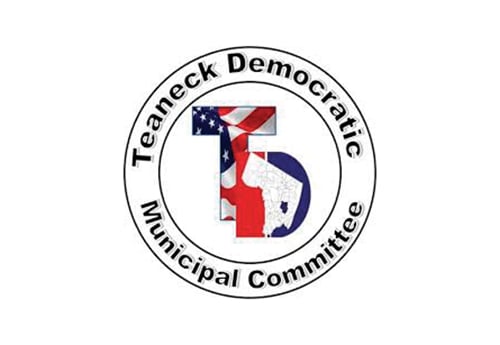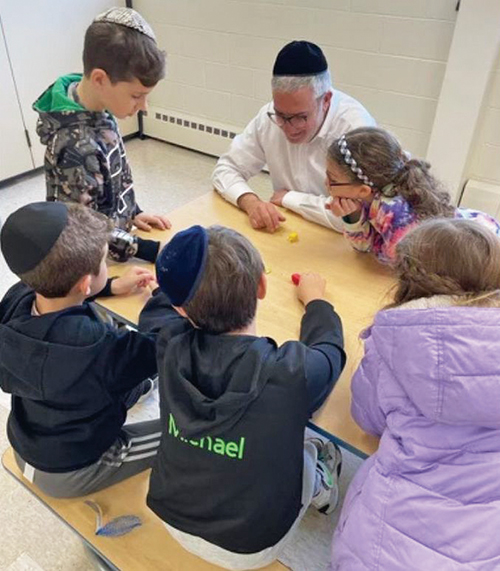
No one understands why I care about Harry Pearlberg. He’s been dead for almost 50 years and I never laid eyes on him when he was alive. In fact, I have never seen a photograph of him or heard the sound of his voice. What happened to him could have happened to my father. His story ended as mine was only beginning. When Harry Pearlberg was murdered, I was 10 years old.
Like my Dad, Harry was a Jewish peddler. One summer morning, Mr. Pearlberg woke up, brushed his teeth, put one foot in front of the other, went to work and was shot to death at point-blank range through a closed door.
The peddlers of the Albany-Troy-Schenectady area had a fraternity of sorts. Mr. Biskin, Mr. Warshaw, Mr. Lazar, Mr. Dinowitz, Mr. Hershkowitz, Mr. Apt, Mr. Pearlberg, and others would meet at places like The Golden Crust Bakery, where Francis Mainville worked as a maintenance man, and would enjoy their hard rolls with butter and a cup of hot coffee. In fact, Mr. Pearlberg sometimes ate breakfast at the counter with Mainville–the two were friendly.
What is the definition of a peddler? Jews in America had a long history of peddling. It was the humble beginning of retail in the 1800s. Peddling continued well into the late 1960s and early 1970s.
When I was a kid, I didn’t quite understand what my father did for a living. It was a bit out of the ordinary and difficult to explain. As an adult, I’ve come to realize the blood, sweat, and tears he shed so that our family could live a comfortable life. Peddlers sold their wares in some of the most unsavory parts of many cities in America. My father, like all the other peddlers, kept cards for each of their customers that recorded the money they spent and their balances to date. These gregarious salesmen sold everything from bathrobes to pots and pans to televisions. Each week they climbed stairs and navigated barking dogs, drunks passed out in vestibules, and dank apartments collecting anywhere from $2 to $10 from their customers. They cashed welfare and social security checks, and extended credit to folks who couldn’t get it otherwise. They worked long hours, and were always in some danger, because everyone knew that they carried cash. Some of my father’s customer’s called him “bag-o-money,” a nickname that sent chills up and down my mother’s spine. I’m sure Rose Pearlberg, Harry Pearlberg’s wife, shared some of the same fears as my mother.
Many of the peddlers were loved by their customers. They sold to several generations of the same family and became a real part of their lives. When they came through their customer’s doors, sometimes they shared a cup of coffee, changed a light bulb, or gave a bit of sage marital advice.
And with the $2, $5, and $10 collections, they built lives for themselves, their wives, and their children, dollar by dollar. They sent kids to college, paid for weddings, and eventually retired.
Harry Pearlberg’s story was the same as for most peddlers. He was brought over from Russia to Troy, NY by his wife’s relatives, the Dinowitz family. He probably didn’t have the money to open a storefront, so he peddled–not from a pushcart with a horse, but from his sedan. The Pearlbergs lived in a modest two-family house on South Lake Avenue.
Troy, known as the Collar City because of its long-ago manufacture of textiles and shirt collars, was once a thriving industrial city on the banks of the eastern Hudson River. It was known for its steel manufacturing and was one of the wealthiest cities in the Northeast at the turn of the last century. By 1967, Troy, like many other industrial towns along the river, was battered and bruised by its plants and jobs moving elsewhere. There was plenty of poverty in Troy and the small towns adjacent to it, and that is where peddlers like Mr. Pearlberg sold their wares.
Francis Mainville, a convicted felon who lived in nearby Cohoes, NY, was angry about the murder of George Lincoln Rockwell, commander of the American Nazi Party, and dubbed “America’s Hitler.” On August 25, 1967, Rockwell was killed by gunshots while leaving a shopping center in Arlington, VA. Rockwell was gunned down by John Patler, a disgruntled member of his own party and decidedly not a Jew. Francis Mainville was livid about Rockwell’s death, so the next day, he decided to kill a Jew. No one will ever know why Mainville set his sights on Harry Pearlberg.
On that fateful day in August, Mainville, a longtime customer of Pearlberg, invited him to his two-family, wooden frame house at 110 Ontario Street in Cohoes just a few doors down from the house that my grandmother shared with my uncle. Pearlberg probably thought that Mainville needed to buy something from him. Pearlberg climbed the steps to the second floor and knocked on the door. Mainville said, “Who is it?” and Pearlberg identified himself. Mainville fired six shots through the door, two of which entered Pearlberg’s heart. Harry Pearlberg was declared dead at Cohoes Memorial Hospital.
If Mr. Pearlberg didn’t die immediately, the last words he heard, by Mainville’s own admission, were, “I hope you die, Jew.” No one will never know if Harry Pearlberg, like Daniel Pearl after him and Rabbi Akiva before him, was able to utter the worlds of the Shema. Mainville was arrested wearing the red armband with the black insignia of a Nazi storm trooper and had a silver Nazi pin affixed to his lapel. He was deemed mentally incompetent to stand trial. Then eight years later, in 1975, Mainville was tried and convicted for the first-degree murder of Harry Pearlberg. Mainville received a life sentence.
At Mr. Pearlberg’s funeral, Rabbi Herman Horowitz eulogized a sweet and kind, 59-year-old husband, father, and grandfather. Like my own father he was a member of Temple Beth El, B’nai B’rith, and the Troy Jewish Community Center (JCC). His son, Ed, worked at Camp Ce-Da-Ca in Grafton, NY, the Troy JCC summer camp where I was a camper. The rabbi called for stricter gun-control laws since Mainville, a convicted felon, used an unregistered.32-caliber hand gun as his weapon of choice. The rabbi advocated for the disarming of all right-wing radical extremists.
Here’s a strange fact about the murder of Harry Pearlberg. The other “kids” from Troy who were my age or significantly older in 1967 don’t remember a Jew being murdered by a Nazi. The Jewish community in Troy was close knit in 1967 with several primarily Jewish blocks within walking distance of the brand new Troy Jewish Community Center building. The Jews had a nice existence in Troy with three synagogues, Orthodox Beth Tefilah, Conservative Temple Beth El, and Reform Temple Berith Shalom; and a JCC with an indoor swimming pool and a Jewish day camp. Like most small groups within small cities, everyone was in everyone else’s business and there was a joke that if you sneezed in your house, your next door neighbors would say “God bless you.” Many of the Jews of Troy were related, and you learned early on not to gossip because you might be bad mouthing someone else’s cousin. Yet, the murder of Harry Pearlberg was hidden from most of the children. There was no organized communal response, no op-eds, no plaques, no statues, no vigils, no educational programs, no protests.
I’m dredging up the past and trying to make some sense out of a situation that is totally senseless. Harry Pearlberg should be a symbol to the Jewish and non-Jewish community in my hometown that this type of killing should never happen again. And yet, he’s been lost in the shuffle. Back in 1967, we didn’t call what happened to Harry Pearlberg a “hate crime.” Perhaps in the post-World War II era in 1967, in a small working-class city in upstate NY, our parents were too self-conscious, or too frightened to draw attention to what happened to him. They were still licking their wounds from the genocide perpetrated on the Jews of Europe and most certainly didn’t want to confront horror with their children. Perhaps they were afraid that Francis Mainville would haunt their children’s dreams in the same way that Nazis populated theirs.
In this new century, we try to memorialize people who are murdered because of who they are, the color of their skin, what they look like, whom they love, or what they believe. The fact that these types of atrocities happen 50 years later demonstrates that we haven’t progressed all that much in a half a century. Perhaps the biggest difference between now and then is that we try to shine a light on hatred and violence in the hope that we will learn lessons about peace and understanding.
Why do I care so much about Harry Pearlberg? Because he was gunned down for no other reason than that he was a Jew. Millions of Jews were murdered in the 20th century–the vast majority in Europe–seldom on the safe shores of the United States. Over time, world Jewry rose up and spoke about what had happened. It memorialized its dead through literature, film, music, and museums. I understand that Harry Pearlberg was just one person. He was one person who never hurt anyone, who just did his best and wanted to live out his life as a Jew in America. So, I’m putting his story down on paper, hoping that he will be remembered.
PHOTO WITH ARTICLE COURTESY OF ALBANY TIMES UNION
By Debby Biskin Flancbaum











